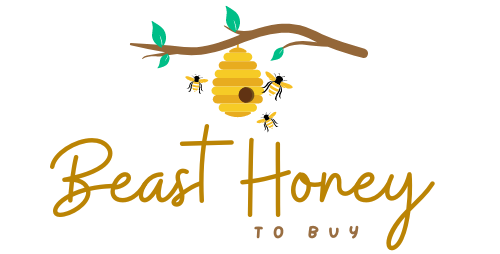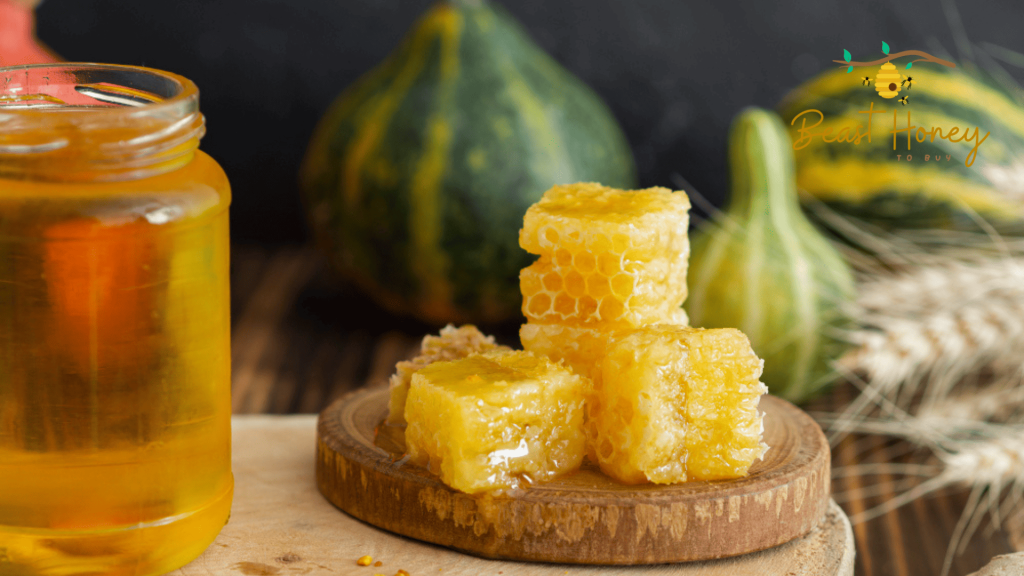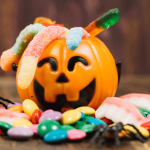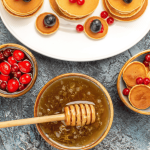Raw honey is a treasure. It’s pure, natural, and packed with goodness.
Unlike regular honey, it’s not heated or filtered. This keeps its nutrients and flavor alive. But here’s the problem: fake raw honey is everywhere.
Some sellers mix it with syrup or sell processed honey as “raw.” Buying fake honey wastes money and misses the benefits. So, how do you spot the real stuff? In this blog post, we’ll share seven red flags to watch for. We’ll make it simple and help you find true raw honey. Let’s dive in!
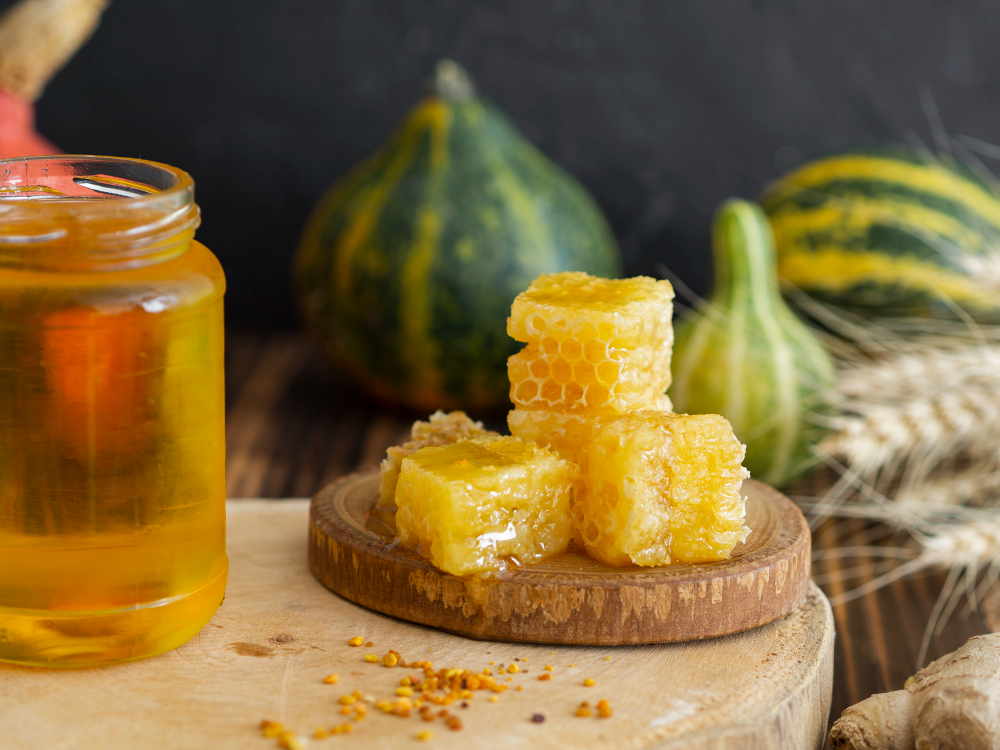
What Is Raw Honey?
Raw honey comes straight from the beehive. Beekeepers collect it without high heat or heavy filtering. This keeps its enzymes, vitamins, and antioxidants. It’s often cloudy, thick, and may have bits of pollen or wax. That’s a sign it’s real! Raw honey tastes rich and unique. It’s great for health, like easing sore throats or helping with allergies.
Why Fake Raw Honey Is a Problem
Fake raw honey is common. Some sellers want to make quick money. They mix cheap syrups, like corn or sugar syrup, into honey. Others heat or filter it but call it “raw.” This tricks buyers. Fake honey has fewer nutrients. It may not taste as good. In some cases, it could even be unsafe. Knowing the red flags helps you avoid these scams.
7 Red Flags to Spot Fake Raw Honey
Here are seven signs that raw honey might be fake. Check these before you buy.
1. Too Cheap to Be True
Real raw honey costs more. It’s hard to make. Beekeepers spend time and care harvesting it. A small jar (8 oz) often costs $10-$20. If you see “raw honey” for $3 or $4, be careful. Cheap honey is usually mixed with syrup or processed.
- Example: I saw a big jar at a discount store for $5. It was clear and runny—not raw at all.
2. Clear and Runny Texture
Raw honey is thick and cloudy. It may have tiny bits of wax or pollen. Fake honey looks clear, like syrup. It pours too easily. Tilt the jar. Real raw honey flows slowly. If it’s watery, it’s likely filtered or mixed.
- Tip: Hold the jar to light. Real raw honey isn’t see-through.
3. No Crystallization
Raw honey crystallizes over time. It forms fine, creamy crystals. This is normal and shows it’s pure. Fake honey stays liquid forever. If your honey never crystallizes, it might have syrup or be processed.
- Example: My friend bought “raw” honey. After a year, it was still liquid. Real raw honey would’ve crystallized by then.
4. Overly Sweet Taste
Raw honey has a complex flavor. It’s sweet but also floral, earthy, or even slightly bitter. Each type, like clover or buckwheat, tastes different. Fake honey is just super sweet. It lacks depth. Taste it carefully. If it’s like sugar syrup, it’s not raw.
- Tip: Try a small sample. Real raw honey feels rich on your tongue.
5. Dissolves Fast in Water
Here’s a simple test. Drop a teaspoon of honey into cold water. Real raw honey sinks and stays clumped. Fake honey dissolves quickly or spreads out. This happens because syrups mix easily with water.
- Example: I tested honey from a store. It melted in water right away. Definitely not raw!
6. Missing or Vague Labels
Real raw honey has clear labels. They say “raw,” “unfiltered,” or “unpasteurized.” Good sellers list where it’s from, like “Wildflower Honey from Oregon.” Fake honey has vague labels. They might just say “honey” or “natural.” Some don’t list a source. If the label looks suspicious, skip it.
- Tip: Check for organic or local certifications. These add trust.
7. No Scent or Weak Smell
Raw honey smells amazing. It’s floral, earthy, or even waxy. Each type has its own scent. Fake honey smells weak or like plain sugar. Open the jar and sniff. If there’s no strong aroma, it’s likely not raw.
- Example: I bought honey at a market. It had no smell. Real raw honey would’ve had a bold, flowery scent.
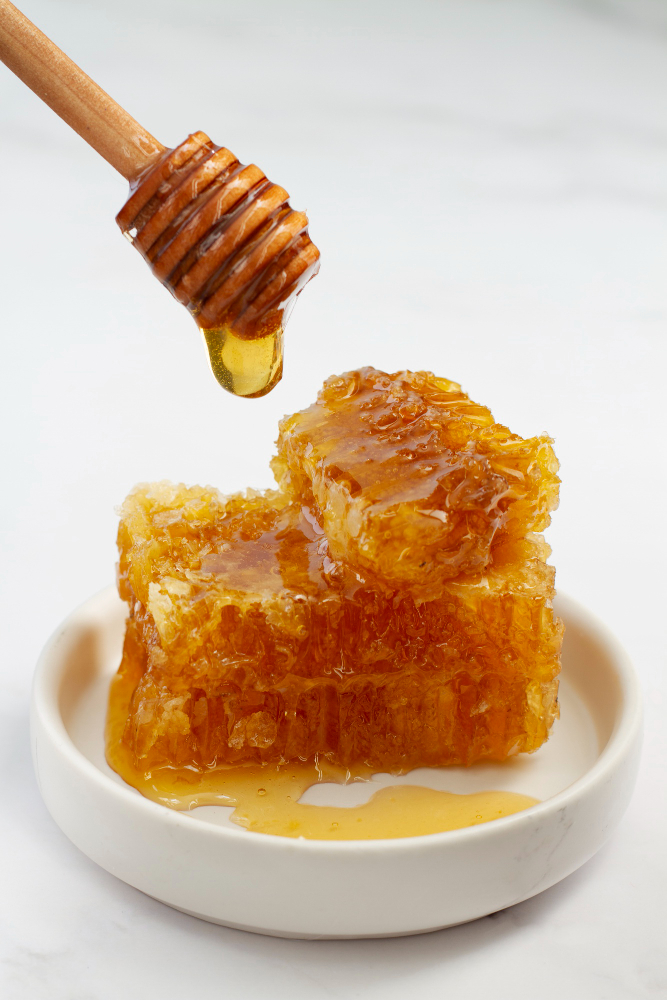
How to Test Raw Honey at Home
Bought honey and want to check it? Try these easy tests:
- Water Test: Drop honey in cold water. Real raw honey sinks. Fake honey dissolves.
- Thumb Test: Rub a drop on your thumb. Real raw honey stays sticky. Fake honey feels watery.
- Flame Test: Dip a match in honey and strike it. Real raw honey lets the match light. Fake honey with syrup won’t.
- Bread Test: Spread honey on bread. Real raw honey hardens in minutes. Fake honey makes the bread soggy.
These tests aren’t perfect. But they help spot fakes.
Why Buy Real Raw Honey?
Real raw honey is worth it. Here’s why
- Health Boost: It has antioxidants, vitamins, and enzymes. These help with colds, allergies, or energy.
- Great Taste: It’s rich and unique, not just sweet.
- Supports Beekeepers: Buying real honey helps small farmers and bees.
- Safe and Pure: Fake honey might have harmful syrups or chemicals.
Where to Buy Real Raw Honey
Avoid fakes by shopping smart. Here are safe places
- Farmers Markets: Meet beekeepers and try samples. Ask about their process.
- Health Food Stores: Look for brands like Y.S. Eco Bee Farms or Nature Nate’s Raw.
- Online Stores: Buy from trusted sites like Thrive Market or direct from beekeepers. Check reviews.
- Local Beekeepers: Search “raw honey near me.” Many sell from their farms or websites.
Always ask for “raw” and “unfiltered.” Check labels and reviews.
Example: My Fake Honey Lesson
Last year, I bought “raw honey” at a big store. It was cheap—$6 for a big jar. It looked clear and tasted like sugar. I tried the water test, and it dissolved fast. Lesson learned! Now, I buy from a local beekeeper. Her honey is cloudy, crystallizes, and tastes amazing. It costs more, but it’s worth it.
Safety Tips for Raw Honey
Raw honey is safe for most people. But keep these in mind
- No Babies: Don’t give raw honey to kids under one. It can cause botulism.
- Allergies: Test a small amount first. Watch for rash or swelling.
- Store Right: Keep it in a cool, dry place. It lasts years if sealed.
- Check Smell: If it smells fermented or bad, throw it out.
Other Ways to Avoid Fakes
Here are extra tips to stay safe
- Ask Questions: At markets, ask where the bees live. Good beekeepers love to share.
- Read Reviews: Online, look for detailed buyer feedback.
- Buy Small First: Get a small jar to test before buying more.
- Trust Your Senses: Use your eyes, nose, and taste to judge quality.
Final Thoughts
Fake raw honey is a bummer. It’s out there, but you can avoid it. Watch for these seven red flags: too cheap, clear texture, no crystals, overly sweet, fast-dissolving, vague labels, or no smell.
Test your honey at home with simple tricks.
Buy from trusted places like farmers markets or reputable online stores. Real raw honey is delicious and healthy. It’s worth the effort to find it. Got a tip for spotting real honey? Share it in the comments! Let’s help each other enjoy the good stuff.
For more information, visit , https://besthoneytobuy.com/
